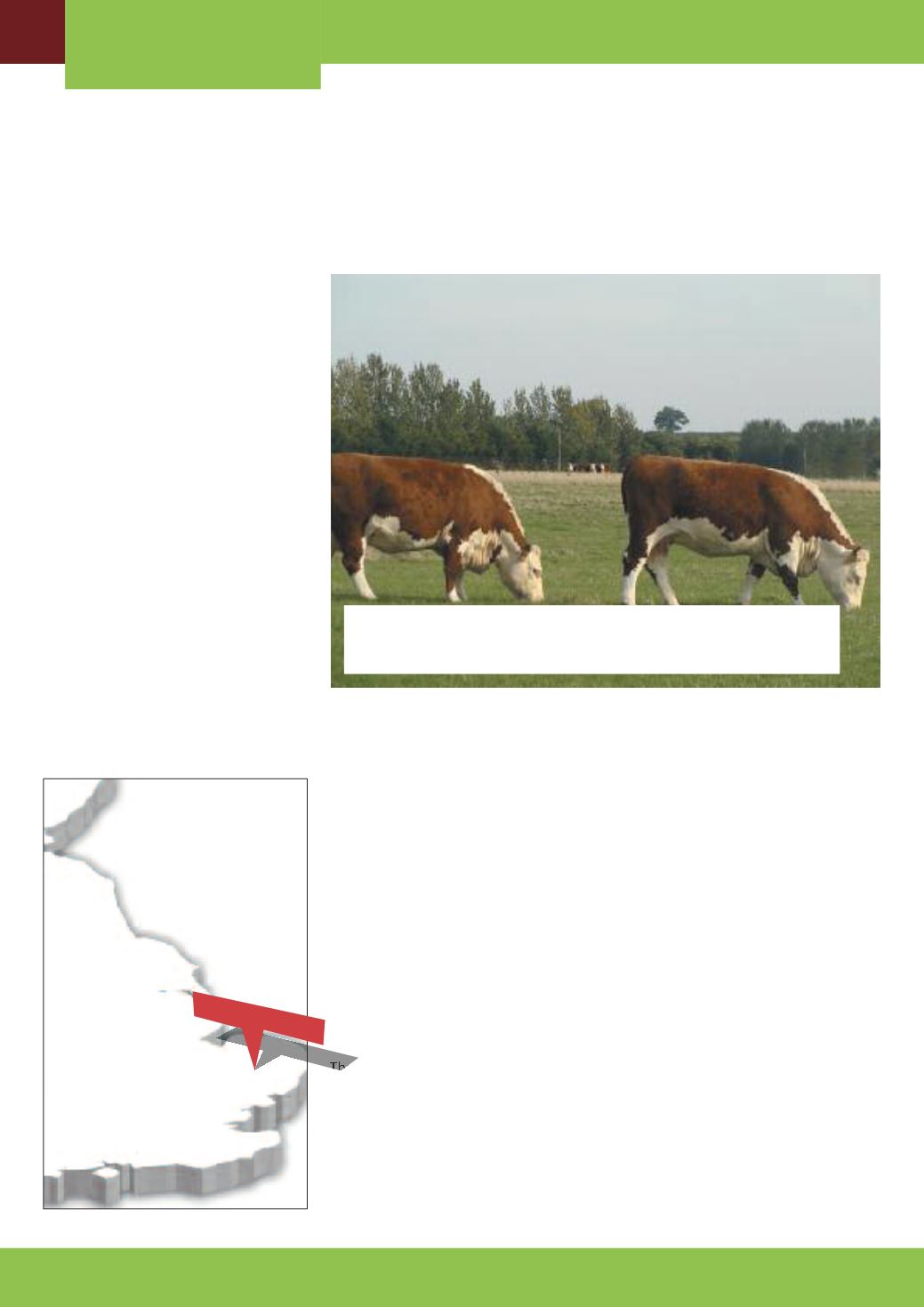
BVD SUPPLEMENT
LIVESTOCK MATTERS - BVD SUPPLEMENT
A strict buying-in policy and
meticulous isolation strategy for
both purchased and show animals
is helping one Norfolk pedigree
Hereford herd to secure
BVD-free status.
Philip and Laura Vincent have taken the
view that adopting a vigorous isolation
and testing strategy is the only way to
protect their business from the
potentially devastating effects of BVD.
With the sale of pedigree stock
representing their main market outlet,
the Vincents believe maintaining the
highest level of herd health will help
create a strong marketing message and
promote buyer confidence.
Their Hereford herd of 35 breeding
females is well on its way to being
accredited free of BVD and is already
accredited free of IBR and leptospirosis.
The farm also has a Johne’s disease risk
level of 2 on the Cattle Health Scheme
accreditation, and is working towards
the highest level 1 accreditation.
Admittedly “risk averse”, Laura says it
made sense to tackle disease right from
the onset when the herd was first
being established.
“We started with two cows and calves
in 2007 and quickly bought four and
then another five and a bull. As we
started buying in and building numbers
we spoke to our vet, Steve Trickey, and
decided to start testing what we had
and what we were buying,”
Laura explains.
“We started BVD testing for our own
piece of mind, but then as we have
grown and started to sell more, we
decided getting involved in an
accreditation scheme would be a good
selling point as well.”
The Vincents are seeing an increase in
buyers asking about the disease status
of stock. Since Philip and Laura started
their herd, the Hereford Cattle Society
has also changed its policy at official
society sales so all cattle must be tested
and vaccinated for BVD.
“Being free of BVD not only means we
are able to produce healthy, quality
calves, but also allows us to protect
dams from the potential negative
fertility effects of BVD infection,” says
Laura. “Regular testing also gives us
peace of mind that we’re not going to
get a breakdown which would be
devastating both financially and
emotionally.”
Steve Trickey from XLVet’s practice,
ChapelField Vets, explains how initial
tests to establish the BVD status of the
existing herd at White House Farm,
Pulham Market, came back negative
for BVD exposure.
“We carried out a check test on
youngstock over nine months of age
and they were negative. The fact the
herd was naive to BVD meant any
exposure to the disease could be
catastrophic meaning it was important
to adopt a total biosecurity package,”
Steve says.
A good electric fence set-up on the
farm thanks to the business’s poultry
enterprise and no close neighbouring
HERD HEALTH REGIME PROVIDES
ASSURANCE FOR PEDIGREE HEREFORDS
In future, the BVD Check Tag scheme being developed by XLVets
will have benefits for commercial and pedigree cattle alike by
helping to identify BVD-free cattle.
ChapelField Vets


